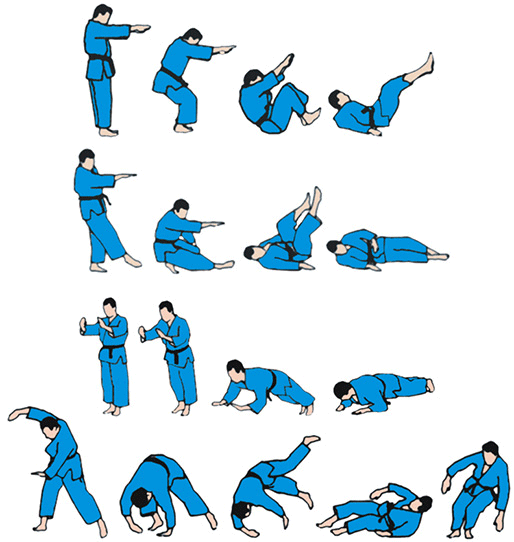Kanji 受け Revised Hepburn uke | Hiragana うけ | |
 | ||
Uke (受け) ([ɯke]) is in Japanese martial arts the person who "receives" a technique. The exact role of uke varies between the different arts and often within the art itself depending on the situation. For instance, in aikido, judo kata, and bujinkan ninjutsu, uke initiates an attack against their partner, who then defends, whereas in competition judo, there is no designated uke.
Contents
An uke typically partners with a partner or nominal opponent. The latter person may be referred to by any of several terms, again depending on the art or situation. They include nage (投げ, "thrower"), tori (取り, "grabber") or shite (仕手, "doer").
Ukemi
The action of uke is called "taking ukemi (受け身)." Literally translated as "receiving body", it is the art of knowing how to respond correctly to an attack and often incorporates skills to allow one to do so safely. These skills can include moves similar to tumbling and are often used as a valid exercise in itself. In aikido and judo training for instance, many classes begin with ukemi training as conditioning.
Forms
Correct ukemi will allow the uke to suffer the least amount of damage possible from a fall. If done correctly, the force of hitting the ground will be spread out along non-critical parts of the uke's body. By properly doing ukemi, the uke can roll out of danger and move into their next course of action without being damaged too much by hitting the ground.
